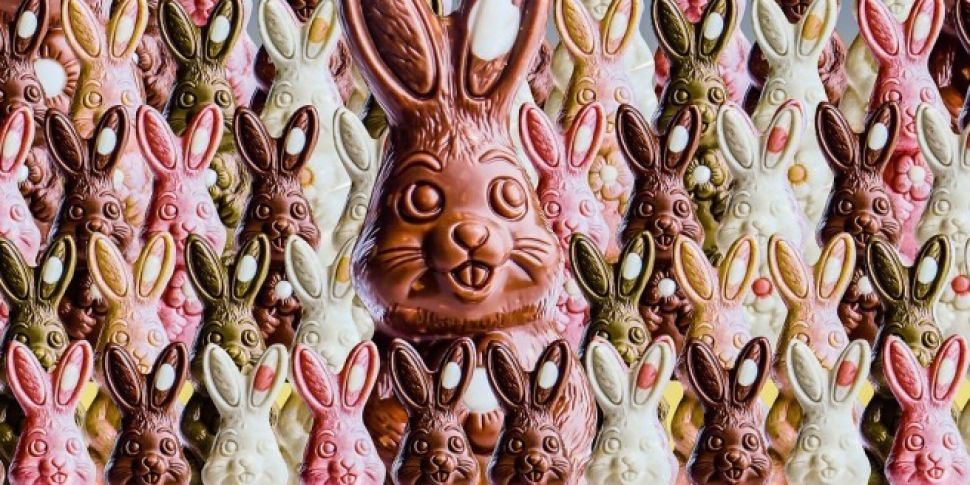As a Christian celebration, the festival of Easter is tied to Roman Catholic rituals that honour the resurrection of Jesus. Fasting and abstinence, washing of feet, and the stations of the cross all feature at prominent points throughout holy week.
But not even the most charismatic worshipper, who pores over every paragraph of scripture, will find any reference to a rabbit that delivers chocolate eggs to children. Just where did the Easter Bunny come from?
Beloved by children and the adults patiently waiting to pick off the cocoa-y carrion left lying around all over the Anglophone world, the Easter Bunny is perhaps one of the most important symbols of spring in our shared culture. But it actually owes most of its history to Germany.
Myth making
The rabbit, who hides brightly coloured eggs for children to find in gardens all over the world, the Easter Bunny comes from the German tradition of Osterhase, which literally translates as ‘Easter hare’.
While its exact origins are unclear, some believe that the Bunny comes from Anglo-Saxon paganism. According to the Northumbrian monk Bede, writing in The Reckoning of Time in 725AD, Easter itself comes Eostre, the goddess of light to whom tributes were made.
“Now they designate Paschal season by her name, calling the joys of the new rite by the time-honoured name of the old observance,” Bede wrote at the time. Whether or not Eostre was an invention of his own remains somewhat controversial in Germanic studies, but it would take more than a millennium for interest in her to rekindle in academic circles.
In the 19th century, German folklore was recorded and studies in earnest for the first time, with the first references linking Eostre to a hare, itself regarded as a symbol of fertility.
According to the myth, Eostre was once left minding a small group of children. To keep them occupied, she transfigured her pet bird into a rabbit, which maintained the ability to lay eggs. Albeit bright and colourful ones she bestowed as gifts unto the children.

[Pixabay]
Another myth paints Eostre somewhat less favourably, who vengefully turned her bird into a rabbit or hare in a fit of pique.
As Bede is the only person to have written about Eostre, as well as the similar Germanic goddess Ostara, historians argue that his interpretation of legend is open to a healthy dose of scepticism. In fact, some would go so far as to say that his version of the story probably appropriates and corrupts the Ukranian custom of pysanky, the craft of ornately decorating eggshells.
Spreads to the New World
The bunny’s debut in the English-speaking world is largely credited to the small groups of devout Christian immigrants that settled in Pennsylvania in the late 17th century. In honour of Easter, they told their children folktales about the Oschter Haws, a dialectal corruption of Osterhase. In the lead-up to the hare’s arrival, German-American kids would make small nests as a place for the eggs to be laid, rewards for good behaviour.
At what point exactly the Oschter Haws was Americanised as the Easter Bunny is unclear, but the modern concept owes much to the hegemonic spread of the country’s culture across the world.
Despite the Bunny having no place in Christian scripture, some Catholic scholars connect the secular symbol to the religious festival anyway; rabbits, known for their prolific breeding habits, have long been a symbol of fertility, with the ancient Greeks believing they could reproduce as virgins. That belief persisted until the Middle Ages, when the rabbit became associated with Mary, who delivered Jesus despite being a virgin.

[Pixabay]
In pages of illuminated medieval manuscripts, such as the Book of Kells, images of Mary are often decorated with rabbit motifs as an allegory of her purity.
Easter around the world
Of course, it’s not just rabbits that pass around chocolate to children this time of year. Depending on where you are in the world, you might be treated to goodies by floating bells travelling to the Vatican (France), wizards and witches (Sweden), or cuckoos that come calling (Switzerland).
And even in the English-speaking world there is some diversity; Australia, native marsupials called bilbies, which have long, rabbit-like ears, are now linked to Easter. The origin of this custom comes from an attempt to protect the species from European rabbits in the 1980s, when a book called Billy the Aussie Easter Bilby was published by the Foundation for Rabbit-Free Australia.

[Wiki Commons]
European rabbits, introduced by settlers, had decimated the wild bilby population, leading to major conservationists creating chocolate Easter Bilbies to promote the indigenous animal. The sweets are now sold all over Australia, with proceeds from their sale going to the animal welfare groups.
So whether in deference to a Germanic deity or saving the Australia from invasive species, enjoy the Easter Bunny in all its leporine loveliness this weekend.









